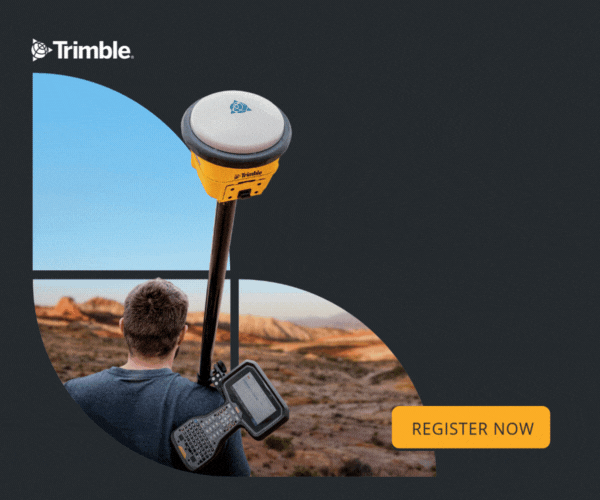Graham, Hillyer and Knight Elected as Assistant Division Directors
The results of the 2008 election have been tallied by the Tellers Committee and they reported that Carolyn Merry, a professor and chair of the Department of Civil and Environmental Engineering and Geodetic Science at The Ohio State University (OSU), won the election to become ASPRS Vice President for 2008. Once she is sworn in as President in 2010, Merry will be the eighth woman (five in the last six years) to hold that office since the Society was founded in 1934. With the installation of officers at the ASPRS Annual Conference in April, Kass Green moves into the position of President; Bradley Doorn becomes President-elect, and Marguerite Madden becomes Past President.
Lewis Graham was elected as Assistant Division Director of the Photogrammetric Applications Division. Graham joined Intergraph in 1985 holding many posts and in 1998 orchestrated the joint venture company of Intergraph and Carl Zeiss, forming Z/I Imaging Corporation. In 2003, Graham founded GeoCue Corporation, a company focused on developing workflow technology for geospatial production processes that has pioneered “LIDARgrammetry,” a technique for direct stereo exploitation in lidar data. He joined ASPRS in the mid 1990s and has been a key contributor to the Lidar Subcommittee in the area of data standards.
Anne Hillyer was elected as Assistant Division Director of the Professional Practice Division. Hillyer is a cartographer in Geospatial Services at Booneville Power Administration (BPE), a federal electrical utility serving the Pacific Northwest. She researched, tested and implemented the first digital photogrammetry production system at BPE. Hillyer began her career in geosciences with the U.S. Forest Service as a field botanist using aerial photography to locate sample plots. She is an ASPRS Certified Photogrammetrist.
Joseph Knight was elected as Assistant Division Director of the Remote Sensing Applications Division. Knight is an Assistant Professor of Remote Sensing in the Department of Forest Resources at the University of Minnesota Twin Cities. He was previously with the U.S. Environmental Protection Agency Landscape Characterization Branch in Research Triangle Park, North Carolina. Knight’s current research interests include land cover mapping and change detection using MODIS images, wetlands mapping and marine water quality assessment.
An ASPRS member since 1975, Merry has served the Society as Chair of the Publications Committee, Membership Chair for the Eastern Great Lakes Region, and Technical Program Co-Chair for the 2007 ASPRS/CRSS Fall Technical Conference.
Currently, in addition to her faculty and chair responsibilities at OSU, Merry serves as the Director of the Center for Mapping. She was a co-Principal Investigator for the National Consortium on Remote Sensing in Transportation – NCRST – that was funded by the U.S. Department of Transportation. She is involved with the follow-on consortium CRESTA – Center for the Remote Sensing of Traffic Activities – with researchers from OSU, University of Arizona and Michigan Tech Research Institute. During a sabbatical to the NASA Goddard Space Flight Center in 1977-78, she worked on educational outreach for the Landsat-7 satellite.
Previous to OSU, Merry was a Research Physical Scientist at the U.S. Army Cold Regions Research and Engineering Laboratory, in Hanover, New Hampshire. Her scientific service includes authorship of several chapters of books, service on proposal review panels for the National Science Foundation, and service on fellowship review panels for the U.S. Environmental Protection Agency. She is currently on the Advisory Board for the U.A. Whitaker School of Engineering at Florida Gulf Coast University and the Advisory Board for Women in Transportation – Columbus Chapter.
She received her BS in Geology from Edinboro University, a MA in Geology from Dartmouth College, and a PhD in Civil Engineering from the University of Maryland.
Merry feels that as an ASPRS officer “It is critical that we educate our next generation in the existing and new analysis tools and the knowledge of available remote sensing data sets and geospatial technologies. This is to ensure that we provide the continuity in the workforce for the future of the geospatial communities. We need to provide leaders for ASPRS and the remote sensing field, whether it is in the government, the private sector, or the university community. My earlier involvement with the government and my research on the engineering side of remote sensing has provided this interaction with the industry. I will work towards integrating the needs of the university, the government sector and private industry in maintaining a constant supply of educated geospatial professionals.”
Further, Merry states, “I have always been impressed with the excellent work that the Society has accomplished over the past several decades. I plan to continue this strong tradition of ASPRS being the world leader in the remote sensing field. I feel that I can contribute my knowledge, expertise and leadership to maintain this integrity and momentum of ASPRS, as the Society continues to be the leader in geospatial information sciences, technologies and applications.”
About ASPRS
Founded in 1934, ASPRS is an international professional organization of 6,000 geospatial data professionals. ASPRS is devoted to advancing knowledge and improving understanding of the mapping sciences to promote responsible application of photogrammetry, remote sensing, geographic information systems and supporting technologies.
